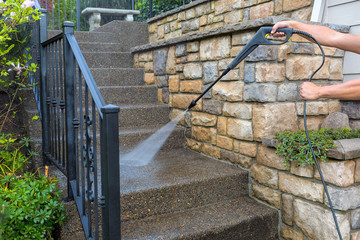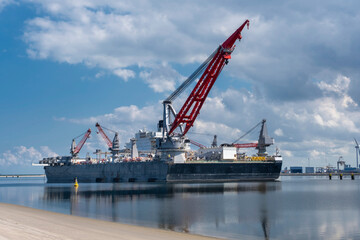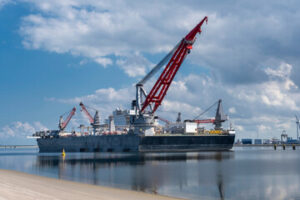Pressure Washing Austin Texas helps restore and maintain the beauty of your home or business. Mildew, dirt and grime build up over time and can damage surfaces and even erode paint.
Always choose the appropriate pressure setting for each surface. Concrete, brick and wood surfaces can withstand higher pressure settings than vinyl. When cleaning with a pressure washer, move consistently and keep the nozzle at least 1 foot away from the surface to prevent damage.
Curb appeal is the attractiveness of a home, office, or building’s exterior. Regularly scheduled pressure washing removes dirt, mildew, algae, and other pollutants that can make a property look dull and worn. As a result, properties with clean and well-maintained curb appeal are more welcoming to guests, visitors, and potential buyers. Investing in regular pressure washing can also protect a property against future damage, saving on costly repairs.
As the seasons change, snow, ice, and rain contribute to grime buildup and stains. Similarly, mildew and mold can quickly grow on outdoor surfaces if not removed. Cleaning these areas with regular pressure washing is one of the easiest and most cost-effective ways to improve a property’s curb appeal.
Pressure washing a property’s exterior can also restore and extend its lifespan. Dirt, dust, and debris can erode the paint on a building’s exterior, leading to early deterioration. Regularly pressure washing the siding of a building helps prevent this from happening, keeping it looking newer for longer.
Professionally pressure washed siding can also help protect it from the elements. Mold and mildew can lead to costly repairs if not removed. These contaminants can bleed through the paint and deteriorate the wood underneath, leaving the structure exposed to further damage. Pressure washing eliminates these contaminants and their sources, preventing them from damaging the structure of a property.
For homeowners, regularly scheduling a professional pressure wash is one of the most cost-effective and fastest ways to improve their property’s curb appeal. Professionals use commercial-grade equipment and have the expertise needed to complete the job safely and effectively in a fraction of the time that it would take a homeowner to do it themselves.
For business owners, incorporating a regular schedule of pressure washing into a building’s maintenance plan shows that the organization takes its appearance seriously. This translates to better first impressions with customers, which in turn can lead to more business and a stronger reputation for the company. This is particularly important for businesses that rely on foot traffic, such as retail and hospitality. A clean exterior is the best way to ensure that customers and potential customers have a positive experience.
Health
Pressure washing is a powerful cleaning tool that can quickly remove grime, dirt, mud and other materials from various surfaces. However, if not used properly, this equipment can be dangerous and lead to injury. For this reason, it’s important to always wear proper personal protective equipment (PPE) and follow manufacturer guidelines. It’s also important to use safe chemical detergents and adhere to environmental regulations when disposing of wastewater. Professional pressure washers are trained to safely operate and handle these machines and know how to avoid damaging wood, vinyl and painted areas.
Slip hazards are another major concern with pressure washing, as algae, mildew and mold can create slippery surfaces that can cause accidents and injuries. Regularly pressure washing stairs, decks, patios and other outdoor areas can remove these substances and prevent accidents, making your home a safer place for you and your family.
When using a gas-powered pressure washer, it is essential to ensure there is adequate ventilation in the work area. This is because gas-powered pressure washers produce carbon monoxide (CO), which is odorless and tasteless and cannot be detected without a CO detector. When exposed to high levels of CO, individuals may experience dizziness, nausea and confusion. If not treated immediately, CO poisoning can be fatal.
Additionally, it is crucial to wear appropriate PPE when handling a gas-powered pressure washer. This includes rubber gloves, eye protection and long-sleeved shirts. It is also important to choose the right nozzle type and pressure setting for the task at hand. Finally, it is vital to drain the washer after each use and store in a dry location to avoid buildup and corrosion. It is also important to check the pressure washer for leaks regularly and have a plan in place for what to do in the event of an accident. Wounds caused by a pressure washer can appear minor and may not seem serious at first, but they can easily become infected and require medical attention. Those who receive wounds from a pressure washer should seek medical attention and get a tetanus shot as soon as possible.
Safety
Pressure washing is a powerful cleaning method for surfaces such as driveways, sidewalks, patios, and decks. It removes a wide range of contaminants that can cause slip hazards, including dirt, oil, algae, and mold. When handled improperly, however, high-pressure water can damage these surfaces, causing further slip risks. The safety of the surfaces, property owners, and cleaning staff during the process is essential to prevent injuries.
Proper handling of pressure washers requires a variety of personal protective equipment. These include heavy-duty rubber gloves that are puncture and tear resistant and will keep out oils and corrosive chemicals. A raincoat with a hood is also recommended to protect the skin from high-pressure water spray and flying debris. Eye protection is crucial as well; a pair of wraparound safety goggles or a face shield offers comprehensive facial protection against water jets and cleaning chemicals that can cause serious injury.
Selecting the appropriate pressure settings and nozzles is another important consideration for safe use of a pressure washer. For example, using a nozzle with too high of a pressure setting can damage some surfaces like wood decking and pavers. In addition, the proper selection of nozzles will ensure that slippery substances are removed effectively without damaging the surface being cleaned. APS technicians are skilled in choosing the correct nozzles for each cleaning task, ensuring that your home’s surfaces receive the most effective clean without damage.
After the cleaning process, it is crucial that surfaces are thoroughly dried prior to use. If left wet, even well-dried surfaces can be a slip risk. It is important to understand the expected drying times for different surfaces and conditions so that you can plan accordingly.
It is also vital to follow all cleaning chemical instructions and warnings carefully to avoid injuries. Some cleaning chemicals, such as bleach, can be toxic when mixed with water or used in excess. All cleaning chemicals should be used sparingly and in a well-ventilated area. Lastly, be sure to plug gasoline-powered pressure washers into a properly grounded receptacle and always use an extension cord that is rated for wet locations.
Environment
The accumulation of dirt, mold, mildew, and other substances can deteriorate the appearance and structural integrity of surfaces such as siding, decks, driveways, and brick walls. Pressure washing eliminates these contaminants and extends the lifespan of exterior surfaces, reducing maintenance costs in the long term.
Removing moss, lichen, and other growth from roofs can prevent premature shingle deterioration and improve the look and functionality of the roof. Similarly, pressure washing concrete and paver surfaces can remove unsightly oil stains and other residues to enhance their aesthetic appeal and longevity.
A clean environment not only looks good but also boosts productivity and creativity. Research shows that working in a cluttered and messy environment can lead to distractions, but an uncluttered space promotes clarity of thought and action, improving mental health and well-being. Moreover, pressure washing removes harmful toxins from surfaces and eliminates allergens, helping individuals with respiratory conditions such as asthma and allergies.
Regularly pressure washing outdoor spaces demonstrates a commitment to quality and care, which leaves a positive impression on visitors and potential customers or tenants. This can positively impact a business’s reputation and, in turn, its bottom line.
By limiting the use of pressure washing to areas that truly need it, you can minimize wasteful water consumption and reduce your environmental footprint. Furthermore, by using environmentally friendly cleaning detergents you can ensure that your cleaning efforts do not harm nearby plants and wildlife. Avoiding unnecessary pressure washing can also reduce runoff that carries pollutants and chemicals into natural waterways, negatively affecting aquatic ecosystems. Exercising restraint when using this powerful tool and limiting its use to necessary areas helps preserve water resources, especially in regions with water scarcity or drought. By following these best practices, you can make a difference in your community and the world!




